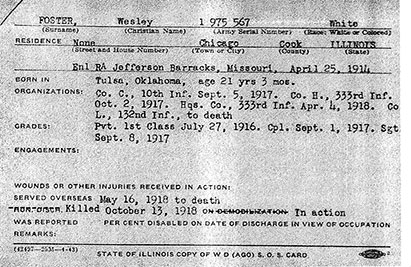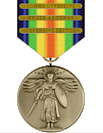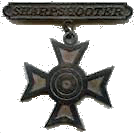Comments regarding Sergeant Wesley FOSTER
Researched and compiled by Edward W. Hudson, grandnephew of Wesley.
Cited for gallantry in action by General Pershing and General Bell. The Silver Star Medal is the United States’ third highest award exclusively for combat valor. The Silver Star was not established as an individual medal until July 19, 1932. At that time, veterans of World War I who had been cited for “gallantry in action” and awarded the “Citation Star” were, based upon specific criteria, authorized to request issuance of the Silver Star Medal in lieu of the earlier ribbon device.
Born 26 Jan 1893 in Greene County, AR to John Lindsay and Mary Frances (Osborne) Foster. John and Mollie (nickname) had eleven children total, six who died at childbirth or before adulthood. Wesley’s father and sister Amanda Hartwick are buried in the same location at Linwood Cemetery. Wesley enlisted in the U.S. Army in 25 April of 1914 and while stationed in the Panama Canal Zone with the 10th Infantry, he participated in several U.S. Military operations overseas before WWI. He was a professional soldier when America declared war on Germany in April 1917. He helped train the “citizen draftees” in two units before being shipped to France on the USS Mt. Vernon out of Hoboken, N.J., on 16 May 1918. As with Elbert Dixon and Ranzie Adams, this citation qualifies Wesley Foster, posthumously, to be awarded the Silver Star. Having been killed in action, he can also receive a Purple Heart. In addition, he is also eligible for the WWI Victory Medal with bars of the offensives in which he was engaged.
|
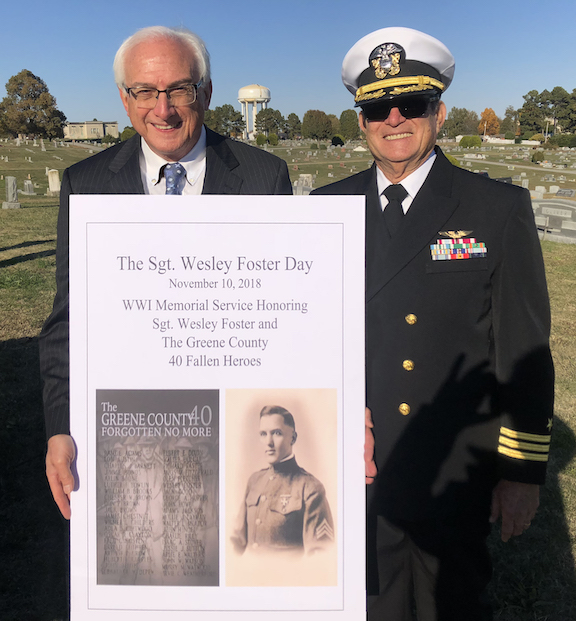
Edward W. Hudson and Commander Ron Miller, USN (Ret)
Dedication of new Sgt Wesley Foster monument, Paragould, Arkansas, November 10, 2018. Ceremony also honored the Green County Arkansas soldiers who died in WWI.
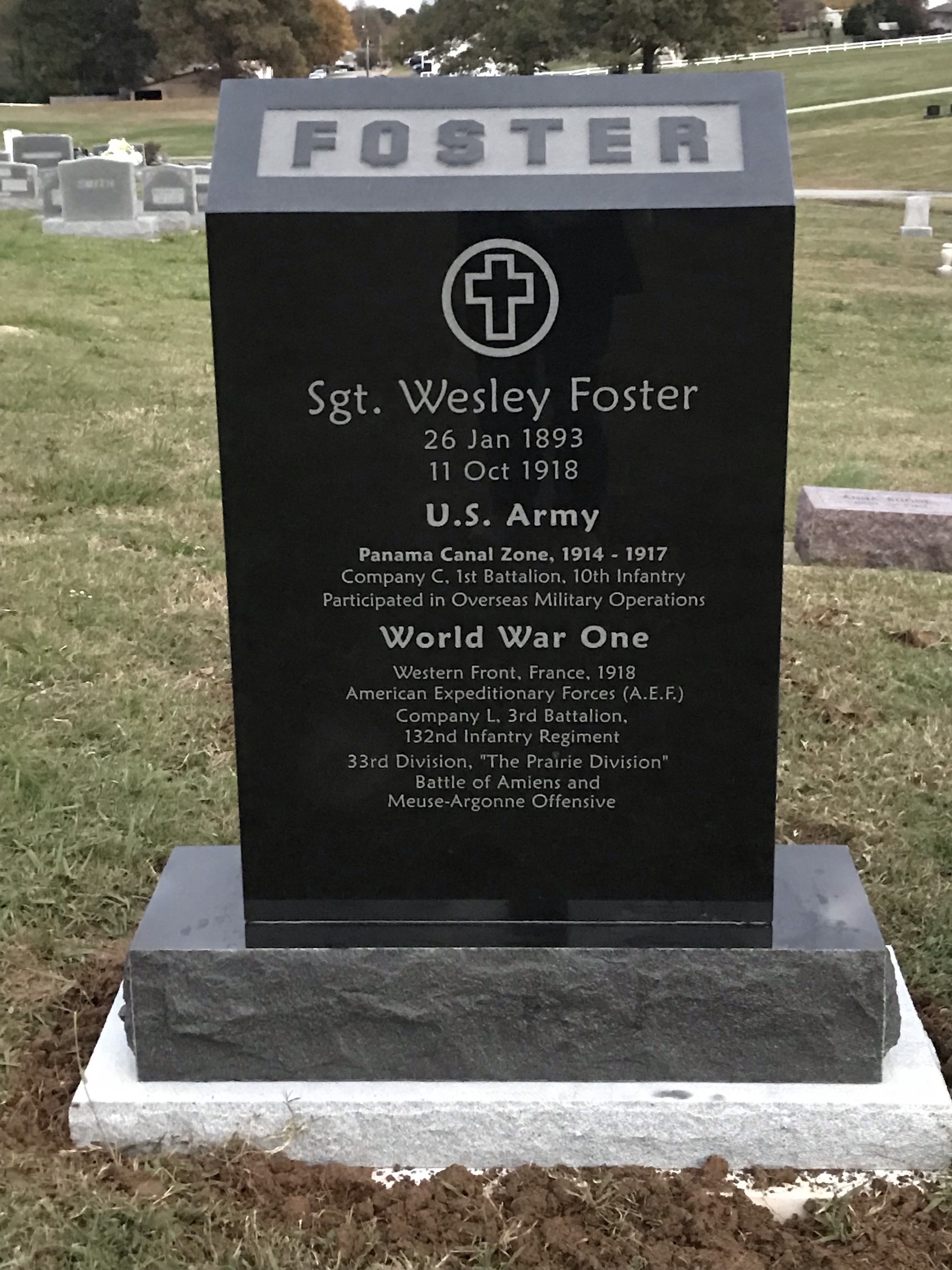
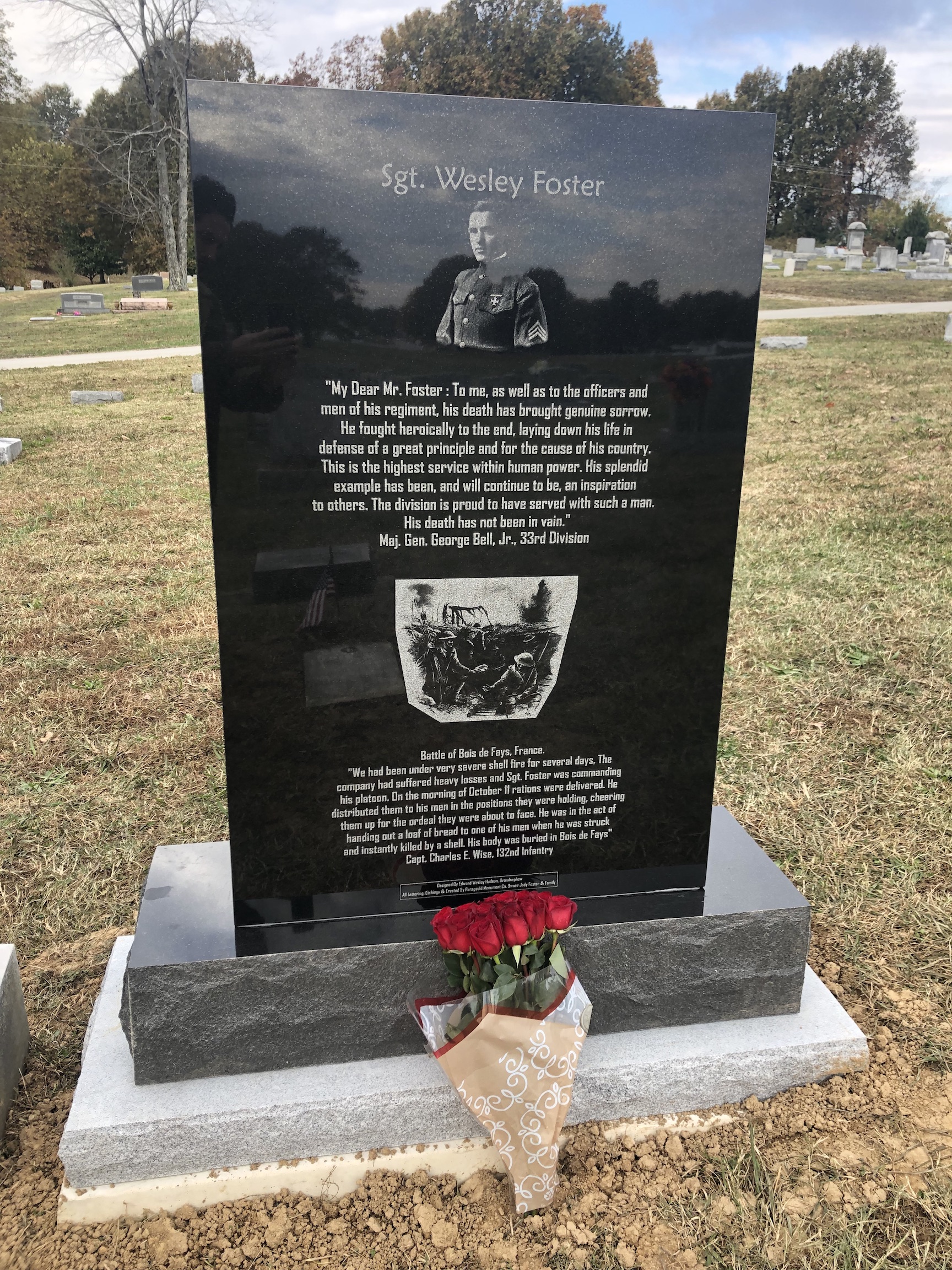
The record below lists information related to Wesley's military service. Discrepencies exist on this and other documents. For example, his date of death and promotion to Sergeant differ on other records. As is the case with all written and remembered information, it is not unusual for differences to exist. It is the person responsible for presenting information to evaluate all data and present the most accurate conclusions as fact. Some official records list erroneous dates and information that cannot be changed. Verification of Wesley's death date of 11 October 1918 has been confirmed by other documents.
